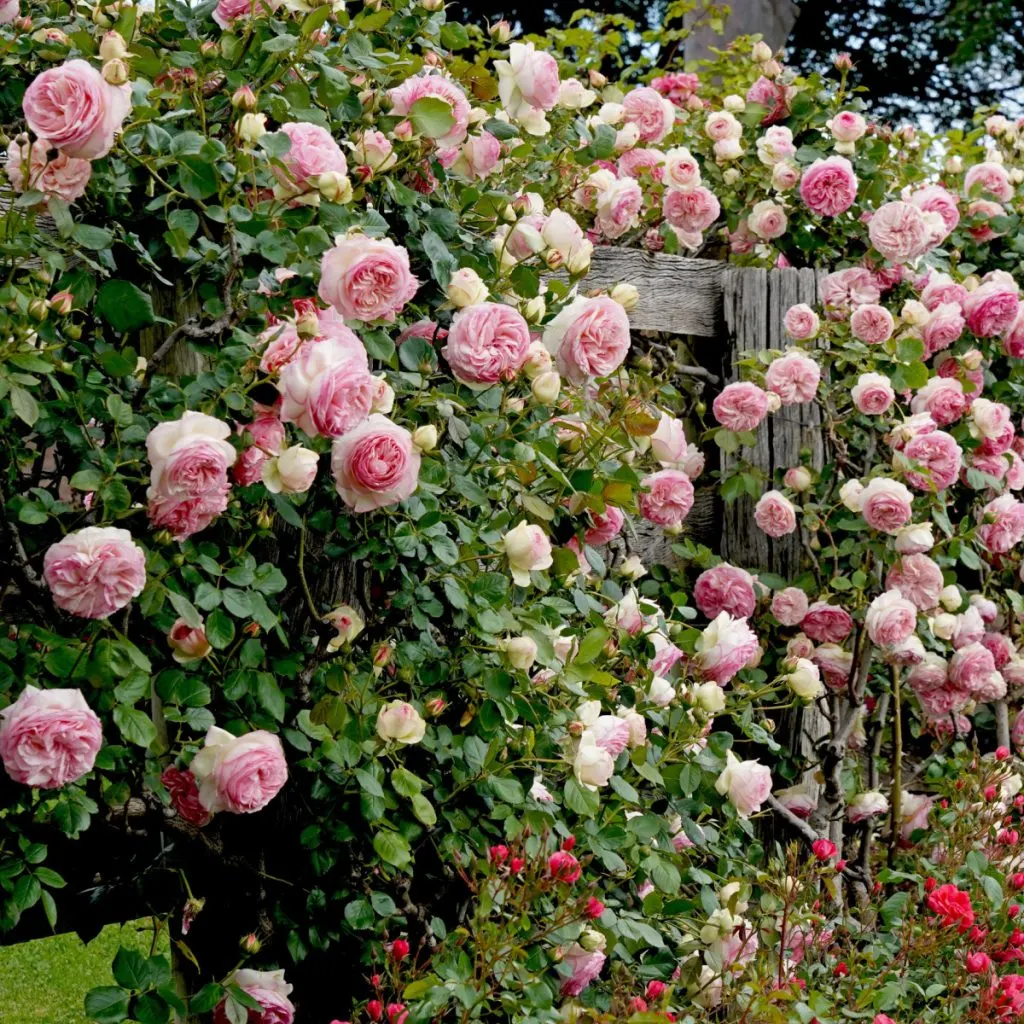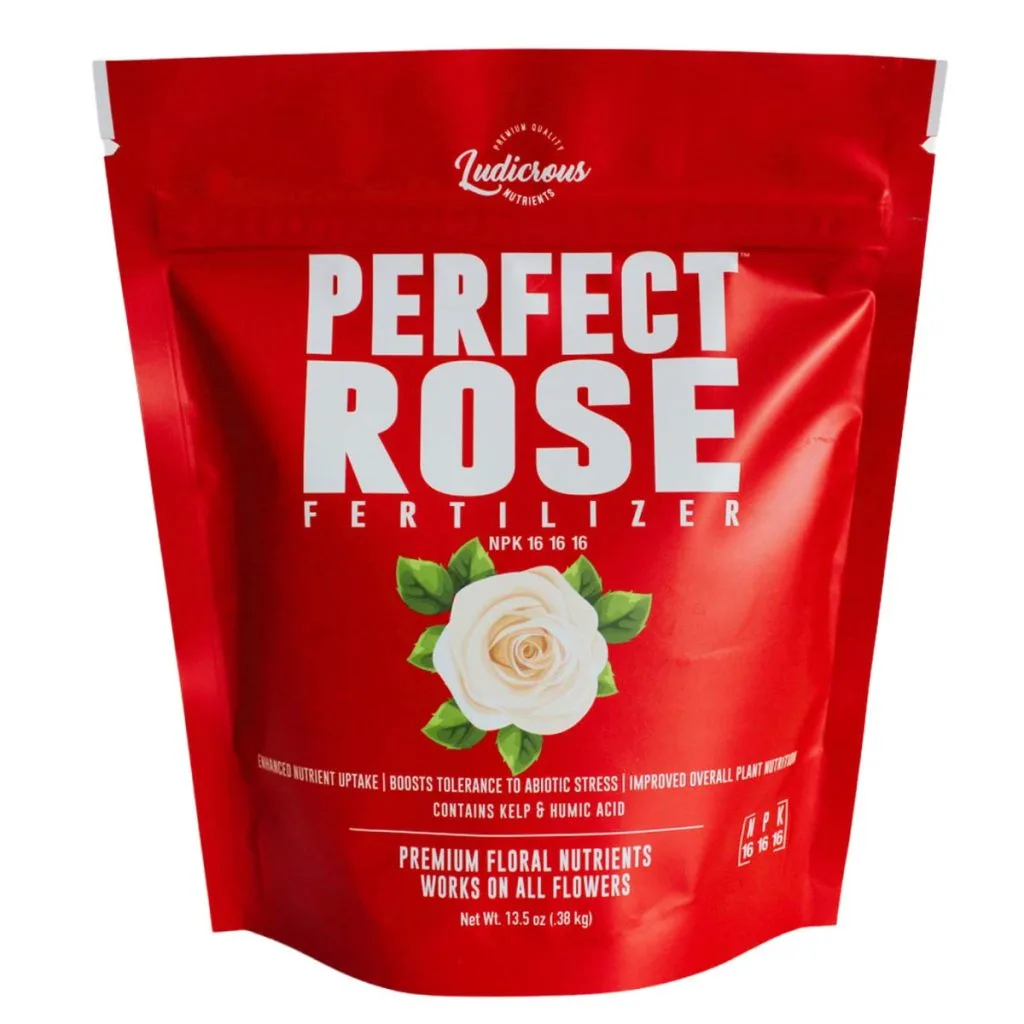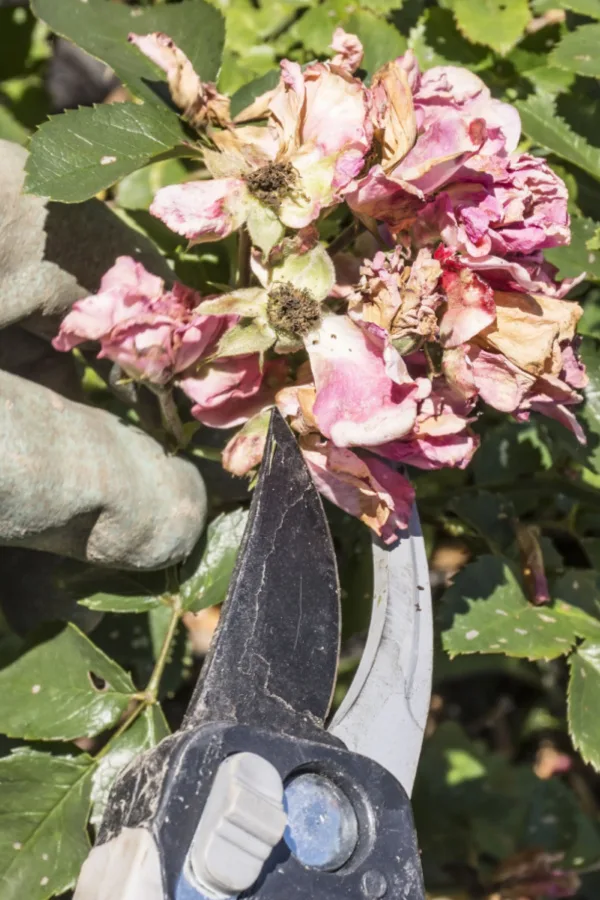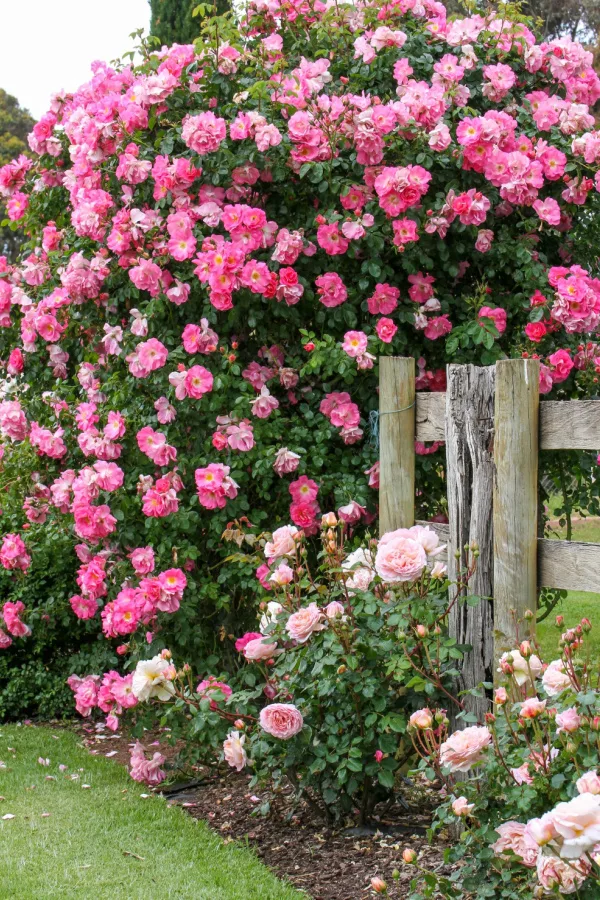One of the best ways to keep climbing roses blooming all throughout the summer months is to fertilize them on a regular basis – but what you use and how you apply it can make a huge difference in just how often your climber will flower!
One thing is for sure, it’s hard to beat the incredible beauty of a climbing rose. The perennial plant produces amazingly long climbing canes that burst with colorful blooms, meandering up arbors, trellises, fence lines – or anywhere they can climb.
But what really make climbing roses special is that they can keep on producing those incredible flowers again and again all summer. While traditional rose bushes bloom only once or twice each growing season, climbers take flower production to a whole new level.

It sounds almost too good to be true, but when properly cared for and maintained, most climbing rose varieties can repeat their bloom cycle multiple times throughout each growing season, allowing for a near constant flush of brilliant flowers. And it all starts with giving them the power they need to flourish!
How To Fertilize Climbing Roses – And Keep Them Blooming All Summer Long!
Although there are several factors that are important to keep climbing roses flowering, one of the most important of all is providing your plants with a steady stream of nutrients.
Because they produce so many blooms, climbing roses are heavy feeders from the soil. And without a little help in the nutrient department, they will begin to back off on blooming. Not only will they struggle to put out new blooms once nutrients are depleted, their foliage can start to fade as well.
The best way to combat this issue is by supplementing with fertilizer. And the best fertilizer to use is one specifically created for powering roses.
When it comes to selecting a fertilizer for climbers, water soluble varieties are the best. These types of fertilizer are able to penetrate fast and absorb into the plant, providing energy quickly. As for the nutrient make-up, it’s also important to have an equal amount of phosphorous and potassium to nitrogen.

Too much nitrogen can lead to overgrowth with little blooms. But by supplying equal amounts of each of the three vital nutrients, you can keep your roses powered for buds and blooming. Affiliate Product Link: Perfect Rose Fertilizer – Premium Rose and Flower Fertilizer
When To Fertilize Climbing Roses
So how often should climbing roses be fertilized? For maximum blooming, it’s best to give an initial application in the early spring as the roses just starts to come out of dormancy – and then give additional doses as each bloom cycle comes to an end.
By giving your climbers a dose of energy as they complete a flowering cycle, it helps the plant to recharge and prepare to set more blooms. This is when climbing roses need the most power, and can it ever help them reset for another round of flowering!
Continue fertilizing climbing roses each time after they bloom up until late summer. At this point, it’s best to stop fertilizing to avoid the plant producing too much late growth. Late growth can be vulnerable to winter freeze out, and put the plant at risk as well.
In addition to fertilizing, there are also a few key chores to perform to help roses continue to bloom. And one of the biggest is to regularly deadhead to remove fading blooms.

Deadheading – How To Fertilize Climbing Roses And Keep Them Blooming
When old, dying blooms are left on climbing roses, the plant will continue to send resources and nutrients to attempt to heal or repair their blooms. And that is energy that should instead be going to producing new blooms.
Deadheading, or the practice of removing spent blooms from a plant, is vital in keeping your climbing rose focused on producing more and more blooms. This is true for traditional rose bushes as well. See: How To Deadhead Rose Bushes To Keep Them Blooming
When you remove the spent bloom, the plant can then use its resources on creating new blooms as opposed to wasting them on blooms already on their way out.
Every few days, check your climbing roses for any blooms that are beginning to fade. Take a pair of hand pruners and snip off the fading bloom. Be sure to cut off a few inches below the stem as well.
In addition, always remove any damaged or deformed blooms. Not only will this allow the plant to direct energy on producing new blooms, but it helps keep climbing roses looking tidy and neat. It also reduces the chance of disease or pests visiting a weaker plant.
Light Pruning
Along with deadheading, you also need to lightly prune your climbing roses throughout the growing season. This too will help them conserve more energy for blooming.

With most plants, it’s usually best to prune early in the season before they begin to grow or to wait until late fall when the plant is going dormant. However, climbing roses need a little pruning each and every month. This is because they continually put out new branches all summer long and can quickly grow too large and wild.
This helps keep the plant manageable and promotes better and stronger blooms. All of those new runners and branches take up the plant’s nutrients and resources as they grow. But by keeping them trimmed up, the plant can conserve energy to produce more blooms.
Summer Watering – How To Fertilize Climbing Roses And Keep Them Blooming
All plants need sufficient water in order to grow and stay healthy – and the same is certainly true for climbing roses. Especially when it comes to getting them to bloom over and over again. For steady blooming, climbing roses should be getting 1 to 2 inches of water each week.
If climbing roses fail to receive enough water, they can start to stress easily. And when plants get stressed, the first thing they do to conserve nutrients and energy is to stop bloom production.

Unfortunately, along with not getting enough water, having too much water can also stress plants out. This too can cause a reduction in blooming. Be careful not to water just to water. If your soil is wet to the touch, back off on watering.
Last but not least, don’t forget to mulch! Mulch is not only good for helping stop weeds, but also for keeping the soil from drying out too quickly.
Here is to fertilizing your climbing roses and to keeping them blooming big and strong all summer long.
Simple Garden Life
Follow Our Facebook Page For Even More Great Tips! Simple Garden Life Facebook Page
Simple Garden Life is a website dedicated to keeping gardening fun, simple and enjoyable! We publish two new articles each week along with a new garden podcast episode every two weeks. This article may contain affiliate links.
